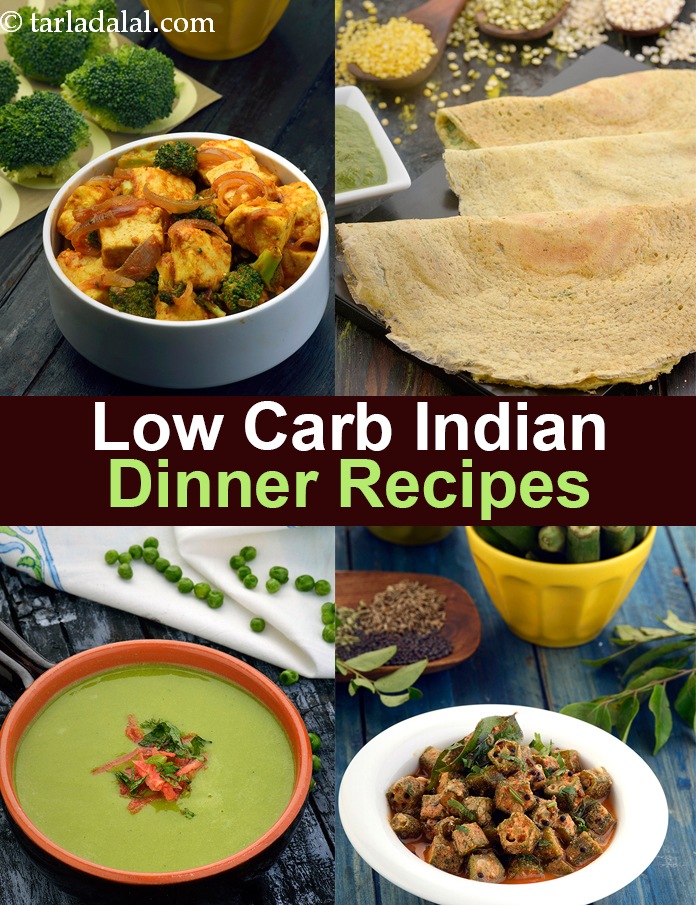
Weight loss is possible through both cardio and strength training. Cardio exercises are beneficial for the body as they increase the rate of metabolism and burn calories, while strength training helps the body burn fat while maintaining muscle mass. You can get the best results from both kinds of exercise if you combine them. Continue reading to discover the many benefits of strength training for weight reduction. Both types of exercise may surprise you.
Combination exercises help to increase muscle growth, and fat burning
You should incorporate compound exercises into your strength training program if you want to increase muscle growth and fat loss. Many of these exercises target multiple muscle group simultaneously. This will allow you to see quicker results if done correctly. Here's how to use compound exercises to accelerate your results:

Resistance training raises post-exercise Oxygen consumption
The body consumes large amounts of energy to rest. This makes it important to boost your REE in order to control weight and promote health. In guidelines for weight loss, resistance training is now included. This type of exercise increases postexercise oxygen consumption (EPOC), and it also increases muscle mass over the long-term. It has many benefits, including weight loss and better overall wellbeing.
Strength training improves posture
Poor posture is not only detrimental to your physical health, but also affects your mental state. Your mental health is also affected by poor posture. According to a study published online in Health Psychology, those with good posture had higher self-esteem than those with lower fears and better mood. The exercises you perform while doing strength training strengthen the muscles that pull you up from a slouched position. They include the mid and lower-back muscles, shoulder external rotators, and neck extensors. In addition, they strengthen your core, glutes, and back muscles.
It increases metabolism
Strength training improves your metabolism. Lifting weights can increase your heart rate which causes your body to require more fuel for its functions. Muscle has a high metabolic rate, and it can burn fat and calories even when you're at rest. After intense weight training, your metabolism stays elevated for hours. This phenomenon is known as excess post-exercise oxygen intake (EPOC).

It burns calories
Two benefits to weight training and weight lifting are building lean muscle and decreasing body fat. Lean muscle is highly metabolic and burns more calories than any other type of tissue. Strength training stimulates EPOC. This is the excess post-exercise oxygen consumption. This process can last up to 38 hours after you have finished your workout. Strength training burns calories even after the workout, which is not like cardio.
FAQ
What's the difference between intermittent fasting versus calorie restriction
Calorie restriction means eating less calories than your body requires. Intermittent fasting, on the other hand, doesn't restrict calories. Rather, it focuses on eating fewer calories throughout the day.
Intermittent fasting works better because it allows for you to enjoy your favorite foods without feeling guilty.
Both methods have their advantages and disadvantages. Decide which one you prefer.
What is the best time to do Intermittent fasting in order to lose weight
The answer isn't as easy as it seems. For optimal fat loss, you need to take into account many factors. These are:
-
Your age. Intermittent fasting can be difficult for young people (under 40). This is because they have less time to recover after each fast. You may not have enough energy for a sustained period of daily fasting if you are older (over 60).
-
Your current body composition. You'll be most successful if you have lots of muscle mass. However, if you have little muscle mass, then shorter periods of fasting may be better suited for you.
-
How physically active are you. Exercise regularly and you may need to extend the fasting window in order to get enough sleep between workouts.
-
Your health history. Patients with certain medical conditions, such as heart disease, diabetes, or cancer, may need additional fasting monitoring.
-
What is your tolerance for stress? Stress can often lead to us eating more. This problem can be avoided by increasing the length of your fasting periods.
-
Which type of diet you choose. Certain diets, like ketogenic diets, may require even longer fasting periods.
-
How much sleep you get. Also, a lack of sleep has been linked with increased appetites and decreased metabolism. It could take some experimentation to discover the best method for you.
-
The amount of protein that you consume. A higher intake of protein may result in lower blood sugar levels. This will allow you to fast longer.
-
Individuals who are trying lose or gain weight will require longer fasting times than those who are trying.
-
What proportion of calories do your fasting hours allow you to consume? Fasting fewer calories per day may result in greater fat loss than fasting for more calories per day.
-
Your overall fitness. Fasters who are very fit tend to have higher metabolic rates, which allows them to burn more calories throughout the day.
-
Your gender. Women tend to have a greater appetite than men, so they might need to fast for longer periods. Women may only fast for 20-30 mins each morning because they have a smaller appetite.
-
Your lifestyle. Are you someone who gets plenty of physical activity? Do you workout several times each week? Is your job a long, sedentary one? These things could impact the speed at which you should go.
-
What amount do you spend on food each month? You don't have to spend much on groceries to eat healthy food. Whole grains can be replaced by white bread, fruits can replace candy bars, and lean cuts of meat can be used to save money.
-
How important it can be to control your appetite. If you don't want to skip meals, you might not need to fast as long as other people do.
How can busy people lose their weight?
To lose weight, eat less and do more exercise.
Weight gain is possible if you eat a lot of food. You will gain weight if exercise isn't enough. If you combine these two simple behaviors, you can lose weight.
How often do people fast every day?
A majority of ketogenic dieters fast one week. However, there are some who fast twice per week. Others fast three times a week.
There is a variation in the length of fasts. Some people fasted for 24 hours and others for 48 hours.
Some people can even travel for up to 72 hours. But these extreme cases are very rare.
What foods are good for me to lose weight quickly?
It is possible to lose weight faster by eating fewer calories. There are two methods to accomplish this.
-
Reduce how many calories you eat daily.
-
Through physical activity, you can increase the amount of calories that you burn.
It's easy to reduce how many calories you consume. We are constantly being bombarded by calorie-dense fast food options every where we go. Here's a list that will help you lose weight.
-
Beans contain high levels of fiber and protein. They have almost no fat making them an excellent choice for dieters looking to reduce their caloric intake.
-
Oatmeal is low in calories but high in nutrients like magnesium and potassium. Oatmeal is lower in sugar than other cereals.
-
Eggs are full of cholesterol and protein. Consuming eggs at least once a week can increase your metabolism and help you burn more calories.
-
Whole grain bread has been shown to reduce hunger pangs so that you may feel fuller longer.
-
Dark chocolate is full of antioxidants. Flavonoids have been linked to lower blood sugar and improved heart health.
-
Cottage cheese is rich with calcium, which helps build strong bones. Cottage cheese is also high in calcium, which aids in bone strength.
-
Omega-3 fatty acid rich salmon is good for your brain and cardiovascular health.
-
Green tea is chock-full of catechins, compounds that fight cancer and increase metabolism.
-
Broccoli is a great source of folic acid, which reduces homocysteine levels in the blood. Homocysteine levels that are high have been linked to increased risks of heart disease and stroke.
-
Yogurt, which is low in sugar, is a great option to add probiotics to your diet. Probiotics are essential for digestive health.
-
Berries are a tasty snack that is also nutritious. Blueberries (strawberries), blackberries; raspberries and cranberries all provide excellent sources of vitamins.
-
Avocados are full of healthy fats. Half an avocado is only 80 calories, but it contains plenty of fiber and potassium.
-
Nuts can be enjoyed as a snack, but they are also rich in protein. You can choose from cashews or hazelnuts, almonds, walnuts or pecans.
-
Sweet potatoes are another starchy vegetable that's packed with beta carotene, which makes your skin glow. Because they have higher levels of beta carotene, the orange sweet potatoes are more beneficial than regular sweet potatoes.
What amount of exercise is necessary to lose weight?
There are many factors that affect the amount of exercise you need to lose weight. However, the majority of people require at least 30 minutes of moderate exercise five days a week.
The American College of Sports Medicine recommends that you do 150 minutes of moderate intensity aerobic activity per week. This should be spread over three days.
To lose 10 lbs, you should aim to exercise 300 minutes each week. This includes activities like jogging or running, swimming laps and biking.
If you're just starting out, consider doing 20 minutes of vigorous activity thrice weekly. It could be sprinting, lifting weights, jumping rope or fast walking.
Aerobic exercise is a great way to burn calories and build muscle mass. Muscle burns more calories per calorie than fat. So building muscle can help you lose weight faster.
What is the best exercise for busy individuals?
Exercise at home is the best method to stay fit. You don't need to join any gym. It is possible to perform basic exercises at home with minimal equipment.
A pair of dumbbells and a mat are all you need.
Your most important goal is to keep up your fitness routine. If you are absent for a few weeks, you could lose your motivation.
Try lifting weights three days per week. This is a great place to start. This could be squats and lunges as well push-ups, pull ups, pull-ups (dips, curls), etc.
Once you've mastered the basics, you can start to move on to other types of exercise such as running or jumping rope, skiing, yoga, Pilates and dancing.
Remember to pick the program that best suits your lifestyle when choosing an exercise program. You might avoid exercising if your work hours are long.
If you are a night owl, then you should consider exercising during the evening rather than early morning.
Pay attention to your body. Don't be afraid to stop when you get tired.
Statistics
- A 12-week study in 20 women with obesity found that walking for 50–70 minutes 3 times per week reduced body fat and waist circumference by an average of 1.5% and 1.1 inches (2.8 cm), respectively (healthline.com)
- One study in 9 active men found that HIIT burned 25–30% more calories per minute than other types of exercises, including weight training, cycling, and running on a treadmill (18Trusted Source (healthline.com)
- It's estimated that half of all American adults attempt to lose weight every year (1Trusted (healthline.com)
- According to a study sponsored by the American Council on Exercise, a person weighing around 140 pounds (64 kg) would burn 108 calories at a 30-minute beginner's Pilates class or 168 calories at an advanced class of the same duration (26). (healthline.com)
External Links
How To
How to Lose Weight Fast Without Exercise
It is best to eat less calories than you burn to lose weight quickly. This will make your body burn more fat to generate energy. Your body will reduce the amount of calories you eat and begin to use that energy to make muscle tissue, leading to some muscle reduction. If you don't exercise while dieting, you can still lose weight. But you will probably lose even more.
Losing weight quickly without losing weight is as easy as reducing your calorie intake. While many people believe they need to cut back on their food intake, it is not the truth. You want to eat fewer calories than what you burn when you are trying to lose weight. What should you eat daily? It all depends on what activity you do daily. Someone who walks three miles per day would require only about 2,500 calories. For someone who sits at their desk all day, they would need approximately 1,600 calories per days. For someone who exercises often (e.g. lifting weights), the daily intake would be around 1,600 calories.
You should reduce your caloric intake if you want to lose excess weight. Many people believe they should eat less food to feel better. However, this is not the truth. Your body doesn't care whether you're hungry or not; it just wants to function properly. Tracking your calorie intake is key to losing weight. Many online apps allow you to track your calorie intake. You can use these apps to monitor your calorie intake, such as MyFitnessPal, Calorie Counter and LoseIt!